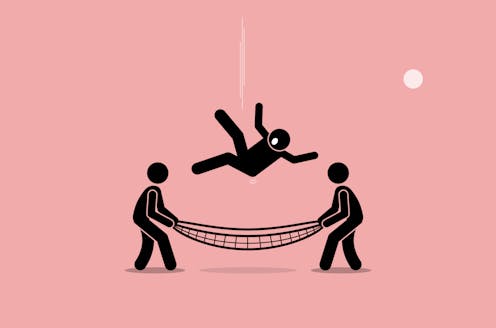What is income protection insurance – and how's it different to total and permanent disability insurance?
- Written by Tania Driver, Lecturer in Financial Planning, James Cook University

Many of us have car insurance, home insurance and health insurance. But what about income protection insurance?
Having income protection insurance https://absoluteinsurance.com.
But how exactly does income protection insurance work, and how’s it different to total and permanent disability insurance (sometimes shortened to TPD)?
Here’s what you need to know.
How does income protection insurance work?
Income protection insurance usually covers only 75% of the first A$20,000 of your gross monthly income, and 50% of gross monthly income that exceeds A$20,000 per month.
This gap is supposed to incentivise you to return to work.
There’s usually a waiting period. In other words, you need to be unable to work for a certain number of days before the benefits start to be paid.
Generally, the longer the waiting period, the lower the premiums (“premium” means what you pay for the insurance). The usual waiting periods are: 14 days, 30 days, 60 days, 90 days, 180 days, one year or two years.
The “benefit period” refers to the period of time you will get paid the benefit. The usual benefit periods are one year, two years, five years, or up until you’re 55, 60, 65 or 70.
How’s that different to permanent disability insurance?
Total and permanent disability insurance gets you a lump sum of money if you’re permanently unable to work in your occupation or in any occupation for which you’re suited by training, education or experience – or if you’ve lost the ability to function cognitively or physically. Or, you can get a payment if you have permanent loss of sight or limbs.
The money can be used for things like modifying the house, medical care or medical procedures.
You can choose a policy that covers you if you’re unable to work in your own occupation, or one that covers you if you’re unable to work in any occupation for which you’re appropriately trained. You can get a standalone policy or one that is built into your life insurance policy.
Under a standalone policy, the amount you get is not restricted to the amount insured under your life insurance policy. (That’s not the case when a total and permanent disability insurance is part of your life insurance policy.)
The main difference between income protection insurance and total and permanent disability insurance is that the former gives you an income stream and the latter provides a lump sum payment.
The other key difference is the amount insured under income protection cover is usually limited to 75% of your income, whereas you could have any amount of insurance coverage under your total and permanent disability policy.
Hang on, isn’t this included in my superannuation?
Many people have their income protection insurance, life insurance or total and permanent disability insurance built into their superannuation. In fact, more than 70% of life insurance policies in Australia are held inside superannuation funds.
The advantages of having personal insurance in your superannuation fund include:
-
lower costs due to super funds often having more bargaining power with insurers to get a good price
-
it can be more streamlined, because the insurance premium is paid directly from your super account; the balance of your super goes down but you don’t have to take money from your salary to pay for it
-
people with pre-existing conditions might find it easier to get certain insurances via their super fund than if they went out on their own
-
potential tax benefits (best to discuss these with a financial adviser).
It’s worth noting all benefits within superannuation, including insurance proceeds, are subject to Superannuation Industry Supervision legislation. It’s difficult to satisfy the legislation’s definition of “permanent disability”; it’s often more restrictive than definitions used by insurance companies.
So even if you satisfy the insurer’s definition of “permanent disability” and the money is paid to your superannuation account, you might not satisfy the legislation’s definition. The proceeds can be trapped in the superannuation fund until a condition of release is satisfied.
Why do people get income protection insurance?
For my research, I interviewed financial advisers and consumers about why people get income protection insurance. Motivations included getting married, having children, buying a house, having a brush with tragedy or knowing someone who did.
Financial advisers often told me immigrants from the United Kingdom, the United States, South Africa or New Zealand are more likely to purchase income protection insurance, as were people they saw as “intelligent”, “conservative” or “more responsible”.
They also said consumers are more likely to consider insurances they thought would be most claimable, such as life insurance and income protection insurance.
People often (wrongly) believe income protection insurance would be paid out if the person was unable to work due to losing their job for any reason.
Financial advisers often commented Australians tend to be relaxed and think unfortunate events are unlikely to happen.
If you’re considering purchasing income protection insurance, make sure you understand the risk of buying it within your superannuation policy (possible downsides include a short benefit period and inability to claim a tax deduction on the cost of the insurance).
And seek professional financial advice when deciding on the appropriate policy.
Authors: Tania Driver, Lecturer in Financial Planning, James Cook University




